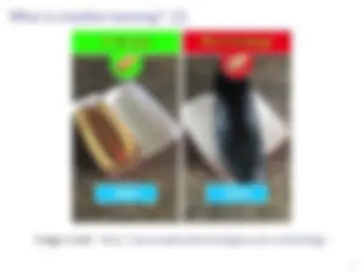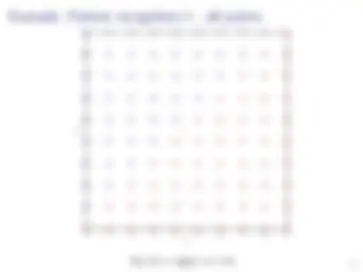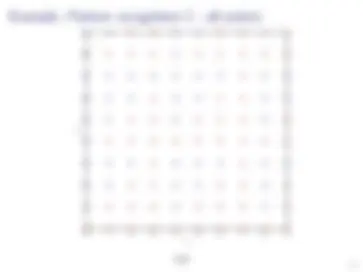





























Study with the several resources on Docsity

Earn points by helping other students or get them with a premium plan


Prepare for your exams
Study with the several resources on Docsity

Earn points to download
Earn points by helping other students or get them with a premium plan
Community
Ask the community for help and clear up your study doubts
Discover the best universities in your country according to Docsity users
Free resources
Download our free guides on studying techniques, anxiety management strategies, and thesis advice from Docsity tutors
Note: This is not an introductory course in machine learning. Also, we won't be overly concerned with practical applications / methods.
Typology: Exams
1 / 35

This page cannot be seen from the preview
Don't miss anything!




























COMS 4995-1 Spring 2020 (Daniel Hsu)
▶ (^) Today: ▶ (^) About machine learning theory ▶ (^) About the course ▶ (^) Some examples of learning problems/settings ▶ (^) Next time: ▶ (^) Concentration of measure
Image credit: http://www.seefoodtechnologies.com/nothotdog/
Examples: ▶ (^) Spam filtering (from email text) ▶ (^) Ad click prediction (from user profile and context) ▶ (^) Gene expression level prediction (from upstream DNA) ▶ (^) Best-next-move prediction (from state of chess board) ▶ (^)... ▶ (^) Programming-by-demonstration
▶ (^) Design/analysis of machine learning algorithms/problems ▶ (^) Computational resources: running time, memory,... ▶ (^) Data resources: sample size, rounds of interaction,... ▶ (^) Many different models for theoretical analysis ▶ (^) Statistical learning ▶ (^) Online learning ▶ (^) Learning with queries ▶ (^) Finding planted structures ▶ (^)...
▶ (^) Breiman (1995) “Reflections After Refereeing Papers for NIPS”
▶ (^) Breiman (1995) “Reflections After Refereeing Papers for NIPS”
▶ (^) Valiant (1984) “A Theory of the Learnable”
▶ (^) Will be “COMS 4773” in the future; can count towards degree program requirements as such. ▶ (^) Website (with syllabus, schedule, etc): http://www.cs.columbia.edu/~djhsu/LT/ ▶ (^) Topics: ▶ (^) Statistical learning (e.g., generalization theory) ▶ (^) Online learning (e.g., learning with experts, multi-arm bandits) ▶ (^) Unsupervised learning (e.g., clustering models), if time permits ▶ (^) Learning goals: ▶ (^) Rigorously analyze ML problems/algorithms ▶ (^) Read/understand research papers in ML theory
▶ (^) Mathematical maturity; reading and writing proofs ▶ (^) Probability, linear algebra, a bit of convex analysis ▶ (^) Prior exposure to machine learning (maybe just for motivation)
▶ (^) Reading assignments – schedule on website ▶ (^) Primarily from a few textbooks, available on the website ▶ (^) Homework assignments – will be posted on website ▶ (^) 75% of overall grade ▶ (^) Project – instructions on website ▶ (^) 25% of overall grade
What is the pattern (input/output relationship)?
0 1 2 3 4 5 6 7 8 9 a
0
1
2
3
4
5
6
7
8
9
b